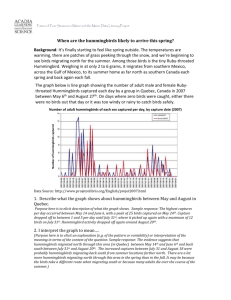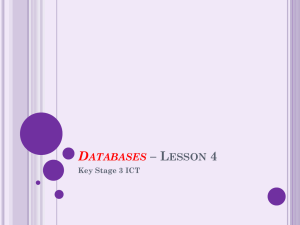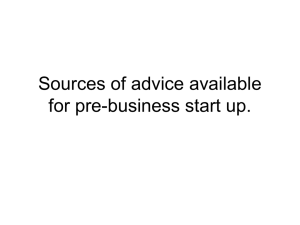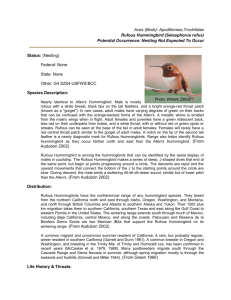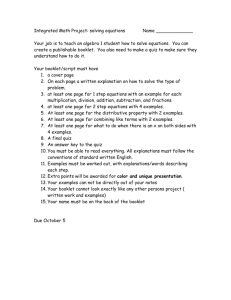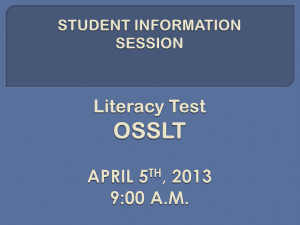Proposal Title: Enhance Habitat for Hummingbirds Project Details
advertisement
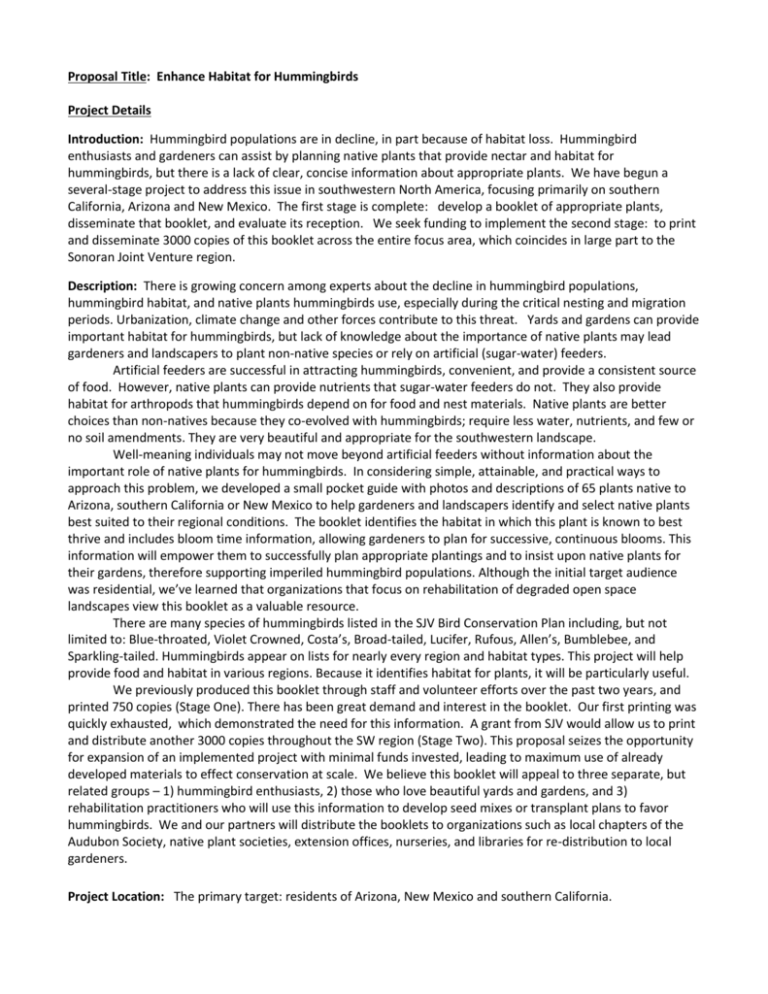
Proposal Title: Enhance Habitat for Hummingbirds Project Details Introduction: Hummingbird populations are in decline, in part because of habitat loss. Hummingbird enthusiasts and gardeners can assist by planning native plants that provide nectar and habitat for hummingbirds, but there is a lack of clear, concise information about appropriate plants. We have begun a several-stage project to address this issue in southwestern North America, focusing primarily on southern California, Arizona and New Mexico. The first stage is complete: develop a booklet of appropriate plants, disseminate that booklet, and evaluate its reception. We seek funding to implement the second stage: to print and disseminate 3000 copies of this booklet across the entire focus area, which coincides in large part to the Sonoran Joint Venture region. Description: There is growing concern among experts about the decline in hummingbird populations, hummingbird habitat, and native plants hummingbirds use, especially during the critical nesting and migration periods. Urbanization, climate change and other forces contribute to this threat. Yards and gardens can provide important habitat for hummingbirds, but lack of knowledge about the importance of native plants may lead gardeners and landscapers to plant non-native species or rely on artificial (sugar-water) feeders. Artificial feeders are successful in attracting hummingbirds, convenient, and provide a consistent source of food. However, native plants can provide nutrients that sugar-water feeders do not. They also provide habitat for arthropods that hummingbirds depend on for food and nest materials. Native plants are better choices than non-natives because they co-evolved with hummingbirds; require less water, nutrients, and few or no soil amendments. They are very beautiful and appropriate for the southwestern landscape. Well-meaning individuals may not move beyond artificial feeders without information about the important role of native plants for hummingbirds. In considering simple, attainable, and practical ways to approach this problem, we developed a small pocket guide with photos and descriptions of 65 plants native to Arizona, southern California or New Mexico to help gardeners and landscapers identify and select native plants best suited to their regional conditions. The booklet identifies the habitat in which this plant is known to best thrive and includes bloom time information, allowing gardeners to plan for successive, continuous blooms. This information will empower them to successfully plan appropriate plantings and to insist upon native plants for their gardens, therefore supporting imperiled hummingbird populations. Although the initial target audience was residential, we’ve learned that organizations that focus on rehabilitation of degraded open space landscapes view this booklet as a valuable resource. There are many species of hummingbirds listed in the SJV Bird Conservation Plan including, but not limited to: Blue-throated, Violet Crowned, Costa’s, Broad-tailed, Lucifer, Rufous, Allen’s, Bumblebee, and Sparkling-tailed. Hummingbirds appear on lists for nearly every region and habitat types. This project will help provide food and habitat in various regions. Because it identifies habitat for plants, it will be particularly useful. We previously produced this booklet through staff and volunteer efforts over the past two years, and printed 750 copies (Stage One). There has been great demand and interest in the booklet. Our first printing was quickly exhausted, which demonstrated the need for this information. A grant from SJV would allow us to print and distribute another 3000 copies throughout the SW region (Stage Two). This proposal seizes the opportunity for expansion of an implemented project with minimal funds invested, leading to maximum use of already developed materials to effect conservation at scale. We believe this booklet will appeal to three separate, but related groups – 1) hummingbird enthusiasts, 2) those who love beautiful yards and gardens, and 3) rehabilitation practitioners who will use this information to develop seed mixes or transplant plans to favor hummingbirds. We and our partners will distribute the booklets to organizations such as local chapters of the Audubon Society, native plant societies, extension offices, nurseries, and libraries for re-distribution to local gardeners. Project Location: The primary target: residents of Arizona, New Mexico and southern California. Project Objectives and Outcomes: Project Goal: Protect hummingbirds by enhancing the supply of nectar and habitat in the Southwest. The objectives of this Outcomes: How addresses SJV and/or other bird project are: initiative objectives. 1) Increase awareness in 1) Gardeners and hummingbird 1 - 2) There are many species of the public of the enthusiasts will plant more plants that hummingbirds listed in the SJV Bird importance of native provide food for hummingbirds. Thus, Conservation Plan including, but not plants for the health of more nectar and habitat will be limited to: Blue-throated, Violet hummingbirds. supplied. There will be greater Crowned, Costa’s, Broad-tailed, Lucifer, awareness of importance of native Rufous, Allen’s, Bumblebee, and plants. 3000 booklets will be printed, Sparkling-tailed. Hummingbirds appear so at least 3000 gardeners will be on lists for nearly every region and reached, assuming one reader per habitat types. publication. More is likely. This project will directly address “The mission of the SJV … to protect, restore, 2) Provide information 2) A booklet will be printed and that will enable selection distributed that will provide necessary and enhance bird populations and habitats in the southwestern United of site-appropriate native information to seek out appropriate plants that benefit plants. This booklet will allow users to States and northwestern Mexico through collaborative partnerships.” It is also hummingbirds. assertively seek these plants through entirely compatible with National their local suppliers. Supplemental Audubon Society’s Mission: “ To conserve materials will be developed to help with this including lists by bloom times and restore natural ecosystems, focusing on birds, other wildlife, and their habitats and habitat types. A form will be for the benefit of humanity and the developed to solicit feedback from earth's biological diversity.” This project individuals and organizations. These is consonant with Audubon’s materials will be produced by Conservation Strategy of creating birdvolunteers. friendly communities. This project is also directly relevant to the Appleton-Whittell mission: “to formulate, test, and demonstrate methods to rehabilitate and safeguard the bioregion, and provide assistance to citizens and policy-makers in the protection and stewardship of our native ecosystems, natural resources and quality of life.” In Arizona, 36 of the 43 IBAs are in the SJV region – all could benefit from additional habitat for hummingbirds. Methodology for Stage One (completed): 1. Multiple lists of plants thought to provide food for hummingbirds were assembled and cross-referenced to obtain a “master list”. 2. The master list was reviewed by hummingbird experts and unsuitable plants were deleted. 3. Nativity of plants on the master list was determined using the USDA plants database, NPIN, Seinet and state/regional floras. 4. A brief plant profile was developed for each plant, using these and additional resources. 5. Photos were selected and permission to use the images without direct photo credit was obtained. 6. Photos and text were formatted and indexed. 7. Drafts were reviewed by the director of the Hummingbird Monitoring Network, the President of the Arizona Native Plant Society, two native plant horticulturists, a rangeland management specialist, and a botanist for the National Park Service. 8. Changes were incorporated and further reviewed by ecologists and home-owners to insure usability. 9. This document was printed in December, 2013. All copies of the first printing are already requested/promised to local organizations, including original funders and project contributors’ organizations. Methodology for Stage Two (this proposal): 1. Booklet will be adjusted to show SJV as major funder. Logos of new partners (Audubon New Mexico, Audubon California) will be incorporated. 2. Booklet will be printed. 3. A mailing list of organizations and addresses will be generated. 4. A brief feedback form will be printed. 5. A brief cover letter will be written and printed. 6. Address labels will be generated. 7. Booklets will be packed and shipped . 8. An interim report will be provided to SJV. 9. Feedback forms received will be summarized. 10. Informal feedback will be sought and summarized. 11. A final report will be written and submitted to SJV. Timetable: Printing of copies Distribution list made Feedback form printed Copies mailed Interim report Collecting and summarizing of feedback Final report Immediately upon funding approval – June 1, 2014 or earlier Immediately upon funding approval – June 1, 2014 or earlier July 1, 2014 July 1, 2014 August 1, 2014 Oct. 1, 2014 Dec. 15, 2014 Evaluation: Our dual-focus evaluation strategy will target collecting information from 1) end-users of the guide (individual gardeners) and 2) the organizations which will be partners in distributing the guides to their members. We want to determine if end-users found the guide easy to use and, most importantly, if using it led them to actually planting native species. We will design a very brief form to include with a sample of 10% (300) of the guides with a returnable addressed envelope. We will also ask the leaders of the organizations that distribute the guides (local native plant societies, Audubon groups, libraries, master gardeners, etc.) for their assessment about the usefulness of the guide and whether it helped them advance their mission. With each box of guides, we will include a brief form to be returned. We will summarize and report the responses to both surveys. The two brief forms will be designed and responses will be summarized, by a volunteer with experience in feedback and evaluation. We believe that these two activities will tell us how successful this project was. We think this strategy is appropriate to the modest budget for this project. List of partners and their contributions, letters of support: New Partners for Stage Two (letters of support are attached): Audubon New Mexico will distribute booklets throughout New Mexico, primarily by using the network of Audubon chapters, but also within the educational programs of the New Mexico state office. Starr Ranch Sanctuary (Audubon California) plans to distribute booklets throughout southern California to Audubon and native plant chapters, homeowners, native plant nurseries, and schools. Audubon Arizona/The Urban Hummingbird Program will distribute these booklets as part of their onsite (Nina Mason Pulliam Rio Salado Center) “Bird Friendly” community programming and their offsite “Urban Hummingbird Program.” We will continue to work with original partners including: The Friends of Sonoita Creek, the Tucson Chapter of the Arizona Native Plant Society, the Borderlands Habitat Restoration Initiative, and the Hummingbird Monitoring Network. These organizations showed their support by providing funding, expertise, support and/or general consultation for the first printing of the booklet. We also have enjoyed the support of individuals named in the booklet that supplied photographs and assisted with editorial review. Attached is a note from a recipient (a docent at the Arizona Sonora Desert Museum) which shows how she will use the booklet. Plans for dissemination of project: The product itself will be disseminated across the geographic region of southern California, Arizona and New Mexico via our network of conservation related organizations. In addition, we will share the word about the project. An abstract for a poster has been accepted for presentation at the Arizona Botanist Meeting about Stage one of this project. The staff of the Appleton-Whittell Research Ranch is committed to and has a long history of disseminating project information through scientific meetings, their website, newsletters and other media. We would anticipate similar dissemination of this project during and after its completion using appropriate regional professional and nature organizations. We would also disseminate both the project information and results through our Arizona Audubon and Research Ranch publications, including newsletters and annual reports. Future plans for further related projects: We hope to: Add a downloadable form of the booklet or other online information to our website. Develop an application for smart phones with this information. Translate the booklet into Spanish for distribution to Spanish-speaking gardeners who are hummingbird enthusiasts on both sides of the border. Identify any additional native plants for hummingbird food and habitat in the adjacent regions of Mexico south of the US border. Develop similar booklets for other native plants which provide food and/or habitat for specific other threatened, endangered, or challenged species. Two companion documents will be developed, using volunteer(s) time, to increase the effectiveness of the booklets: a. bloom time chart to assist gardeners in planning a plant succession for coverage over the season. b. habitat types chart to help gardeners focus on the plants best suited for their habitat. Compliance We are not aware of any relevant compliance issues for this project. Our booklet includes a statement regarding not harvesting wild plants, but the scope of this project was not such that protected plants were identified. Nor do we anticipate any threat to any plant or animal species from this project. We do not believe there are any necessary permits or permissions either that are relevant to this project. On the contrary, we believe that this project’s purpose, to encourage the purchase from nurseries and planting of native plants, is compatible with sound environmental practices and pertinent regulations. Budget Budget Categories Stage 1(complete) Audubon Staff and Volunteer Postage Contributions Reviewers Subtotals Stage 1 Stage 2 (request) Audubon Volunteer Volunteer Printing Postage Facilities Use Partner(s) Partner(s) SJV Applicant Contribution(s) Contribution(s) Request Contribution (monetary) (in-kind) Total 0 9000 300 2400 9000 300 2400 1400 1400 1400 13100 0 1328 443 6450 200 200 8621 2400 2400 0 9300 0 1328 443 6450 200 Subtotals Stage 2 6650 200 1528 TOTALS 6650 10828 443 1843 21721 Map of Areas Affected by Project: Southern California, Arizona and New Mexico Here’s a note that shows how this booklet will be used – for her own garden and as an educational tool.

